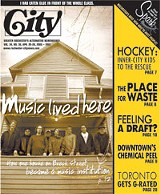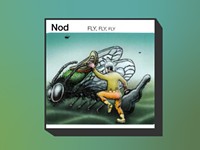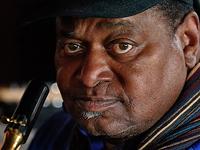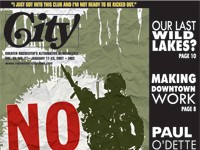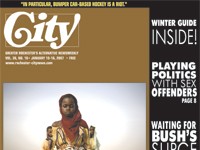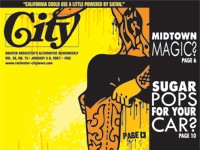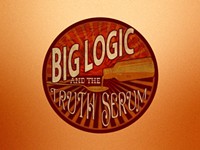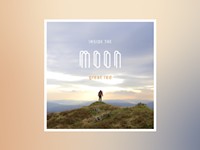[
{
"name": "500x250 Ad",
"insertPoint": "5",
"component": "15667920",
"parentWrapperClass": "",
"requiredCountToDisplay": "1"
}
]
It would probably amaze (or disgust) folks outside the life what musicians will do to support their habit.
When a band forms the possibilities are endless. Its members are drawn to the frills --- fame, immortality, sex, beer --- as if by siren song. But then reality slowly sets in. Wallets get thin. Girlfriends split. Pretty soon all that's left is a band in need of rehearsal space and a place to, well, live. The possibilities are bottomless.
If you've ever eaten cereal for all three meals; if you've ever wiped your ass with a coffee filter or made coffee with toilet paper; if your bare feet have ever stuck to the bathroom floor; if one of your walls was ever a Mexican blanket; then you can relate.
Rehearsal space --- even if it's dank and cramped --- is always a commodity. And despite the many concessions, when a band lives together the intimacy and communication between members get cranked up. A vibe emerges.
The Stooges had The Fun House. The Band had Big Pink where they got down with the newly electric Dylan. The Grateful Dead's house at 710 Asbury Street was the epicenter of San Francisco's then-emerging hippie counterculture.
288 Breck Street is an unassuming, green, three-bedroom house in a marginal neighborhood on Rochester's northeast side. The ghosts of bands it has housed from 1987 on up to this year still reverberate off its walls.
These days it's just another house on any street, USA, but in its prime 288 Breck Street was the Flower City's ground zero. Bands like The Essentials, The Salamanders, The Squires of the Subterrain, Coffee, Lotus STP, The Fertility Rite Brothers, Nod, and numerous other conglomerations rehearsed, lived, partied, recorded, and jammed here, occasionally morphing into other bands.
A musical energy dominated despite the logistical nightmare of multiple bands trying to rehearse at the same time, visits from crack-head neighbors, or squatters squabbling over the couch.
"Just the whole aura of the place was perfect for what was happening," says Nod's Brian Schaeffer. "This was the breeding ground for stuff. The fact that Nod all lived together, you know. Once we were all awake on Saturday morning if we wanted to we'd just go practice. That was the foundation."
"There were bands in the basement, four track studios in the bedrooms with control rooms in closets," says The Squires' Christopher Earl. After being bounced out of his rehearsal space, Earl discovered the house for 500 bucks a month in rent. He and fellow musicians Tim Poland and Todd Bradley were the first to move in.
By the time they were settled, the place boasted stereos (or hi-fi's of the wood veneer and tweed variety), TVs (both living and dead), and an organ --- all salvaged curbside.
"There was always a record on the record player, a guitar on the couch," says Nod- and Coffee-member Tim Poland. It was if the house suggested music, pulling it out of people not even in bands.
"People would come over and think this was the place to play music," says Nod's Joe Sorriero. "I used to have this roommate and I liked his playing a lot. And I asked him at one point 'are you still playing?' And he was like, 'Nah, that was something I just did while I was at Breck Street because that just felt like the thing to do there.'"
"Just like if you leave something in a jar and mold forms," says Lotus STP's Stan "The Man" Merrell. "So instead of penicillin, the mold turned into different music projects."
Of all the bands to emerge from the house Nod --- in all its freeform improvisation and lowbrow, lo-fi oddity --- truly embodied the spirit of the place.
"A lot of what Nod was about was the moment," says Schaeffer. "You can hear it in the music. We're a one-take band --- whatever happens is great. So rehearsals were often improvised. It was like 'OK, I'll get donuts and beer and we'll play.'"
But more often than not the sound emitting from Breck Street's bowels was the roots-rock boogie of The Essentials who, during that period, changed their name to The Salamanders. The band rehearsed four nights a week, recorded with The Skeletons' Bobby Lloyd Hicks, and jammed with Country Kellum of James Brown's band. One memorable night in 1989, they got to play with Soul Brother Six legend Lester Peleman. And even though by that time Peleman had all but abandoned r&b, resolving to sing only gospel, he still wanted to hear the band play.
"So he comes down to the house with his wife, we meet him, he's a real nice guy," says guitarist Greg Townson. "So we went down to the basement and he said 'go ahead, play one of our old songs.' And I was like 'jeez, I'm gonna be singing this song in front of this guy --- this guy's song.' I started the song, and I'm telling ya it hadn't gone four measures into the guitar introduction of the song "What Can You Do When You Ain't Got Nobody" and he jumped up out of his chair and he's like 'stop, stop, start that again.' I started it up and he grabbed the microphone and just wailed on it. He just raised the roof off that place that rehearsal. We were all big smiles. He just brought the house down."
After that one pairing with The Essentials at Breck Street and a subsequent gig at Richmond's, Peleman quite his Kodak nine-to-five, moved to Philadelphia, and dove back into music.
"In that one moment, he was totally back," Townson says. It was a life-changing moment in the least likeliest of places: a dank, cramped basement.
"I remember the looks on certain people's faces as they descended the stairs," says Essential/Salamander saxophonist Mark Bradley. I couldn't even stand up down there except between the rafters and even then I could get a nail through the top of my head. I think once the initial shock wore off that they were playing in what amounts to a dungeon, a hole in the earth, they were fine."
"There's something about that basement," says Schaeffer. "You'd look at it and go, 'How the hell can this sound good?' But there's something about the way it bounced off the bikes and the laundry and all that stuff. My drum set was next to the dryer and washer so I was always hitting it."
The basement hosted one historic live Coffee broadcast on Columbia University's WKCR via Ma Bell in 1995.
"We had like 10 to 12 guys in the basement," says Poland. "We put the phone at the top of the stairs and we just went nuts in the basement with two drum sets, saxophones, cellos, basses, guitars, horns. We played straight for an hour."
"It was pretty cool," recalls Earl. "From thunderous noise to low key plinking and plunking."
Though the house officially never had more than three or four tenants, that number was always easily doubled by squatters, couch surfers, down-and-out musicians, and overnight guests that wouldn't leave. There are tales of kitchen fires, neighborhood arson, basement floods, tequila-induced comas, visits from Uncle Sam, bathroom doors that wouldn't shut, and bedrooms with no walls.
There was also at least one epiphany.
"I was only living over there for a brief time," says Townson. "And it was actually a low point in my life to be honest with you. And I was sleeping on their couch --- I was one of the couch guys --- and I remember being woken up one morning hearing Coffee rehearsing. Dave Cross was blasting this trumpet and I remember thinking to myself 'I have got to get my life together.'"
Though many are still playing music in various projects, just about all the musicians once involved with the house have now moved on. Earl's moving out earlier this year marked the end of 288 Breck Street's tenure as a band house. These days, it's a home, a house with a more civilized, domestic feel. The place is tastefully decorated and clean. And though current resident Charles Leport's (Vision Stain, Hinkley, Finkbeiner, Seneca Lanes) drumset occupies the basement, the Breck Street era is now just another chapter in Rochester rock 'n' roll history.
Most of the Breck Streeters have since gotten married, bought houses, had kids, and bought into the American dream to some extent, having already lived the rock 'n' roll dream... to some extent.
"All said and done, none of us ended up 'making it,'" says Poland. "I believe living at Breck Street taught me the importance of the process and just doing it for the sake of doing it."
"It was like living in your studio," says Sorriero. "I could go to the basement whenever I wanted. I miss it. That's probably why I lived there for 10 years."
"It was weird going to a practice space for the first time," Schaeffer adds.
"It was always such a creative place," says Earl, who keeps the spirit alive in a basement studio in his new crib. "Somebody was always up to something and that was inspiring in and of itself. Anything could set something off in terms of the creative process. There was potential for any kind of chemistry to happen if you were tuned into it."
Positively Breck Street: an essential discography
Between all the cassettes, 45s, CDs, and one-off recordings --- plus the bands put together for barely longer than one recording session --- it's hard to get an accurate count on all the recorded music to come out of 288 Breck Street. The combined body of work that blasted out of this pad speaks volumes of the talent, experimentation, creativity, and talent during one of Rochester's most important musical moments in time.
Here are the must-haves.
The Squires of the Subterrain
Strawberries on Sunday
Rocket Racket Records (2003)
The Squires are really just the Squire (aka Christopher Earl). Earl has cranked out a ton of CDs of pure pop delight with enough psychedelia and sonic texture to counter the happy happy Beatle-esque harmonies. And though the Squires have well over a dozen releases, Strawberries on Sunday really paints the picture of Earl, secreted away in his room creating solo pop music gems at all hours.
The Squires of the Subterrain
Big Boy Pete's Treats
Rocket Racket Records (2002)
Though most Squires releases sport the disclaimer "recorded in the basement on analog gear by the Squire," Big Boy Pete's Treats is a departure, utilizing the talents of Rochester musicians like Dave Snyder, Rob Filardo, and Keith Parkins (three non-Breck Street residents) along with British producer and pop progenitor Pete Miller --- pulling them into the Breck Street legacy. And though it incorporates an ensemble cast, this album still delivers catchy, fun ditties, as if it came from a time when pop wasn't overshadowed by culture, but defined it.
The Fertility Rite Brothers
Return of the Axeman's Daughter bw/ I Met Her At The Continental
Jargon Records (1998)
Though a greatest hits CD was released last year, this 45 accurately conveys the frenetic energy and insanity of the band. The Fertility Rite Brothers barely held it together over their short history through brief bursts of alcohol-fueled rock 'n' roll mayhem. Rochester cult figure Thing sang --- one degree shy of howling --- for this group and slept on the Breck Street couch for extended periods of time. Very few groups anywhere today embody this group's abandon or rock reverence.
The Salamanders
Livestock in the Living Room
After Hours Records (1992)
Emerging from the ashes of The Essentials, The Salamanders were Rochester's roots-rock champs. Like hero NRBQ, the band casually took a bite out of every American rock 'n' roll subgenre --- jazz, blues, boogie woogie, r&b, soul, pop, rockabilly, country --- and blasted them out into a toga party. Livestock in the Living Room is the group's only full-length release (back cover photo shot in the Breck Street living room) and still plays cool with every spin.
Coffee
Artifact/Artifact Shadow
The Lotus Sound (1996)
Best described as manic free jazz, Coffee is a group known for pushing it. This double disc has the group floating comfortably in the hypnotic ether in some spots and sounding like Canada geese having rough sex in others. Coffee is an organic alternative to those artists who too often overthink their music. It may be little over-the-top for those who try to make sense out of it; it'll be just right for those who just let it be.
Nod
I'm Around
Nod/Baby Music (1995)
Nod, more than any other group, epitomizes the experimental rock mood at Breck Street. Nod produces in-the-moment, at-the-moment tunes, which were often created as they were being put to tape. Joe Sorriero's tuning is sour in its search for those elusive, unplayed notes, and his quasi-mad ramblings on I'm Around are more like songs in larval form. What's amazing about Nod is that all three members are heading in the same general direction even though there is clearly no map.
Lotus STP
Million Dollar Ring
Jargon Records (1987)
Probably the most straight-ahead rock 'n' roll outfit to come out of Breck Street. Lotus STP was part of the wave in the mid-'80s when mid-'70s barroom rock (think The Real Kids, Eddie & The Hot Rods) was cool again. 20 years later barroom rock is still cool and Stan is still the man.
